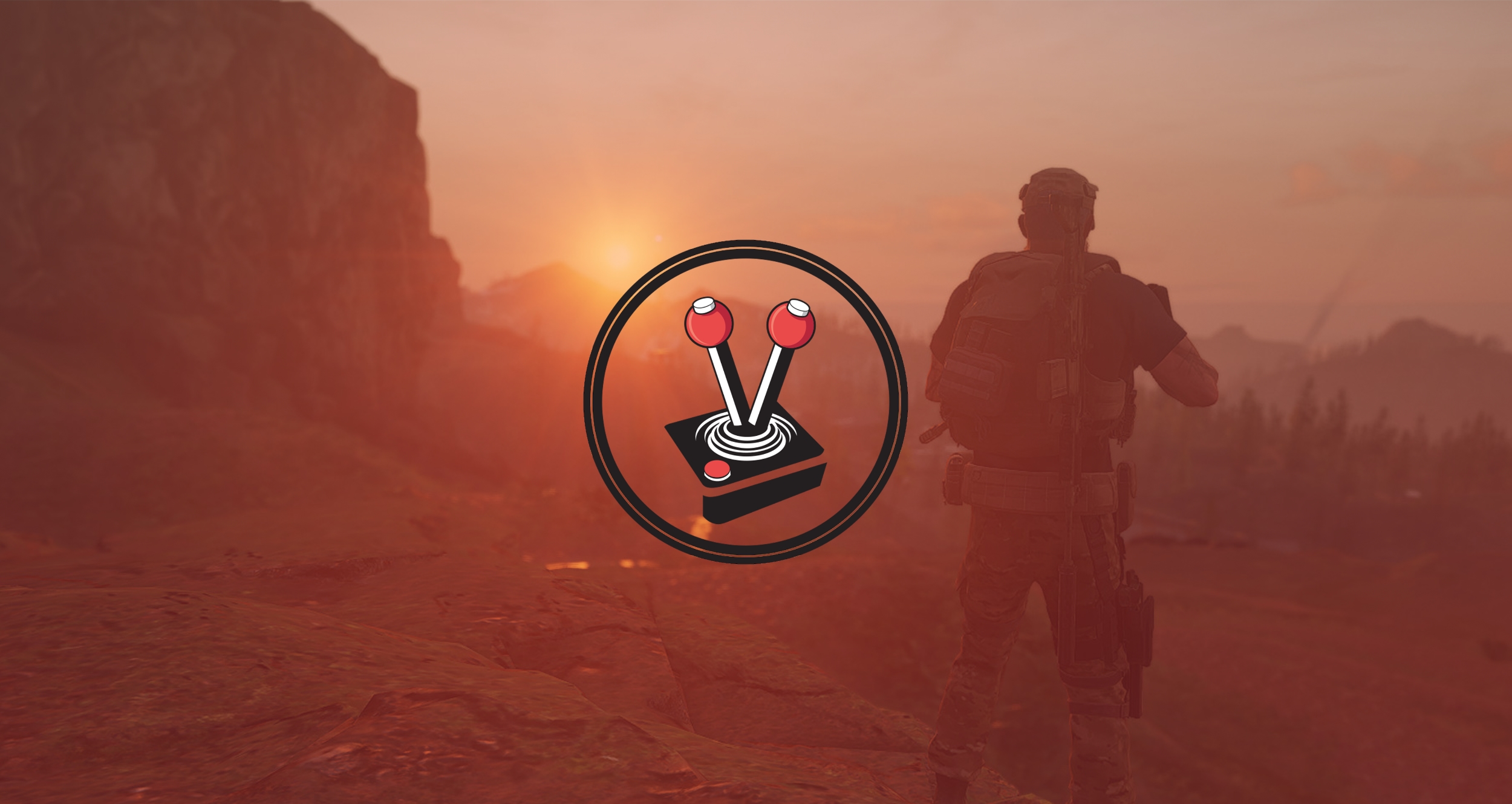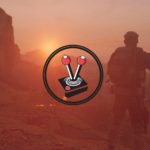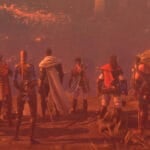Ghost Recon Breakpoint
R899Tom Clancy’s Ghost Recon franchise has gone through an exceptional transformation from its once intimate and special ops/behind enemy lines beginnings. The series debuted in 2001, where the Espionage and Military novelist himself took part in the creation of the game. Years later the franchise would keep the Tom Clancy moniker, but evolved into a tactical team-based shooter where future-tech and invisible cloaks dominate the battlefield. Ghost Recon Wildlands released in 2017 to much fanfare from many fans. However, its role-playing game (RPG) take on the franchise left many people on the fence of indecision about whether these changes were good or not. It changed everything Ghost Recon ever stood for, and reinvented the franchise to fall in line with its other newly-turned — or otherwise designed from the ground up to be — open world properties: Assassin’s Creed and The Division.
Ultimately, more and more people saw Wildlands for the great and underrated game that it was. Hence Ubisoft followed through with the release of Ghost Recon Breakpoint. Breakpoint, however, is not without its faults. Well before launch, the community riled up against the (quite honestly) egregious amount of microtransactions it features. At first, this knowledge made it difficult for me to jump into the game without a biased predisposition. Fortunately, I managed to see through the veil and enjoy the game, which I have thoroughly enjoyed thus far!
Old Man Nomad
One of the biggest issues I encountered with Ghost Recon Wildlands was its shocking lack of narrative. While the game delivered beautifully on setting and gameplay, it had a very difficult time explaining the exact reasons why Nomad and his band of ghosts were in Bolivia. Beyond, of course, nailing some cartel kingpin the Drug Enforcement Administration could not touch. The sequel, however, perfectly builds on the legend of Nomad. It delivers a sequel that, in stark contrast to Wildlands, has one of the best Ghost Recon stories I have played since Tom Clancy’s Ghost Recon (2001).
One of the biggest improvements from the previous title is the fact that Breakpoint takes place on the fictional Pacific archipelago of Auroa. A beautiful and lush mountain island owned by Jace Skell, CEO of Skell Technology and maker of the world’s most advanced technologies. Once again, the player jumps into the shoes of Nomad. This time, however, players can choose to have Nomad be female! The game presents the player with a cool little customise screen right from the onset. There are only a few presets and advanced facial tweaking is minimal and mostly menial, but it is a nice addition. Once you have decided on your perfect look, the game opens up with Nomad and a troop of 32 ghosts being shot out of the air by drones!
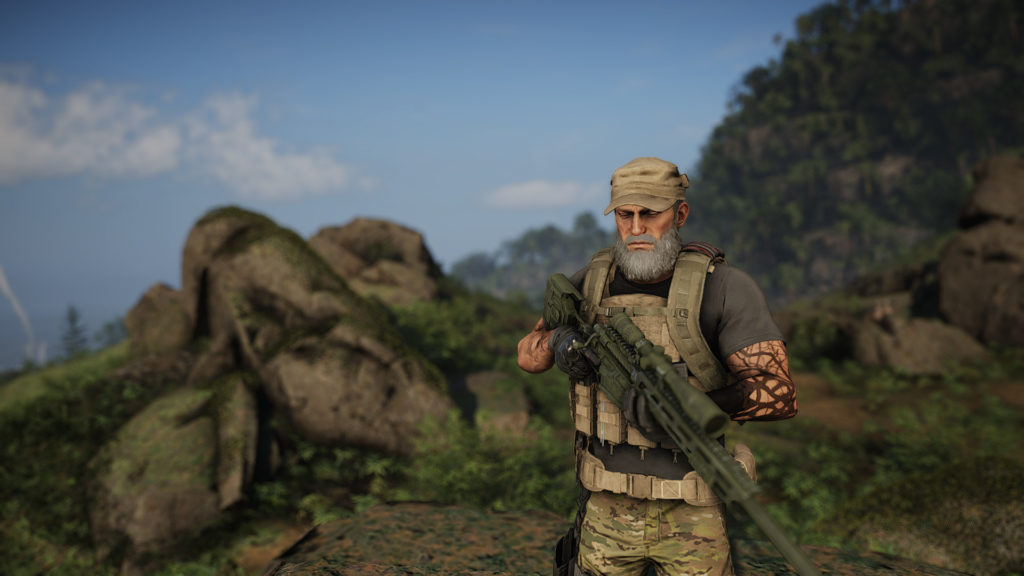
The game picks up in the midst of the chaos. Nomad regains consciousness; bloodied, broken and very much alone. He grabs a pistol from one of his fallen comrades, bandages himself up, and like the badass he is, hurries toward the crash sites of the other two choppers. He then makes his way toward the Landing Zone (LZ). The game makes it obvious that this is nothing like the carefree open-world machismo romp of Wildlands. Instead, it is a darker, grittier, fight for survival; where a much older Nomad has to get to the bottom of why half his men have been shot down, and what his past has to do with it.
As Nomad makes his way through this new environment, he finds intel suggesting how an old friend might have something to do with all of it. He soon witnesses former Ghost operative, Cole Walker, and now-turned private military contractor, shoot the remainder of the ghosts nearby one of the crashes. He then comes to the conclusion that Walker’s forces may have turned the island into an impenetrable fortress. Nomad heads toward the only location he knows and finds insurgent rebel forces. They want to see Walker’s forces go as much as the ghosts do. It is only when Nomad reaches their secret base of operations where the game’s open-world finally opens up.
Courtesy of the open-world nature of the game, players can go ahead and traverse the entire map at their own leisure. However, any player who cares about video game stories should rather take it slow and let the narrative expand the map. This might be strange for anyone who is use to Wildlands’ sheer disregard for any narrative, but Breakpoint features a welcome story that is exciting to unravel.
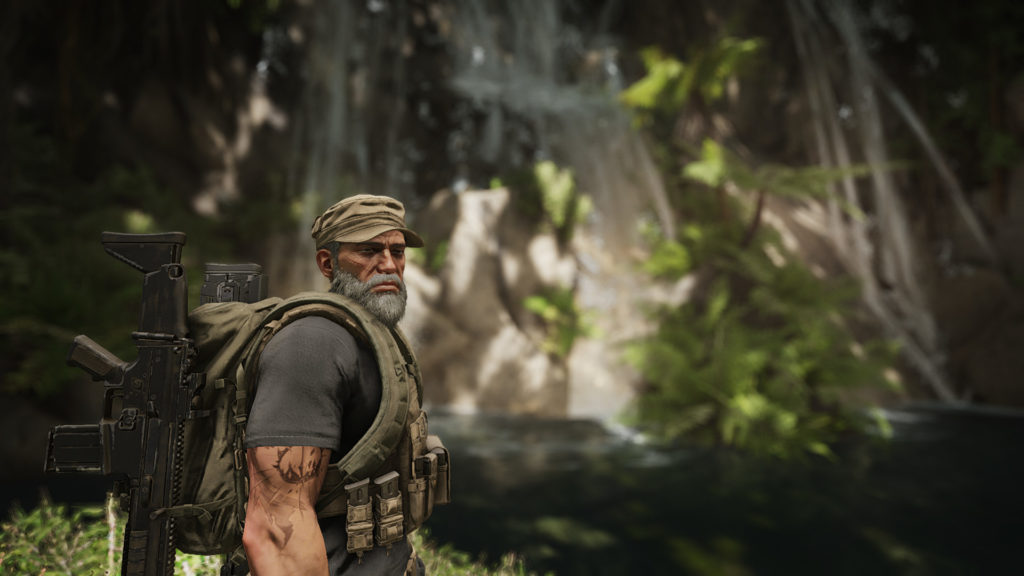
Sit down, sweetheart, take a break
Given the explosive opening, the first order of business in Ghost Recon Breakpoint is survival. Nomad now auto-loots ammunition from bodies and crates, he collects consumables on his own and also grabs onto useful plants all by himself. The only input the player needs to carry out during these activities is to walk close enough to any of the above! I quite like this change, as it allows players to focus on what matters – spotting enemies who might be blending into their jungle environments, and scouting for the next bush or vantage point.
When the game awards you with your first skill point, you are encouraged to go through the menu and choose a class. The initial options here consist of Field Medic, Assault, Panther (stealth specialist), and Sharpshooter. I decided to go with Field Medic at first because it would allow me to unlock a permanent 20% experience boost on the next skill point. Every class has its class-specific ability, and the Field Medic has quicker healing. With that in mind, it must be noted how characters have access to pretty much every single perk or ability – the choice of class is just a way of categorising players for multiplayer.
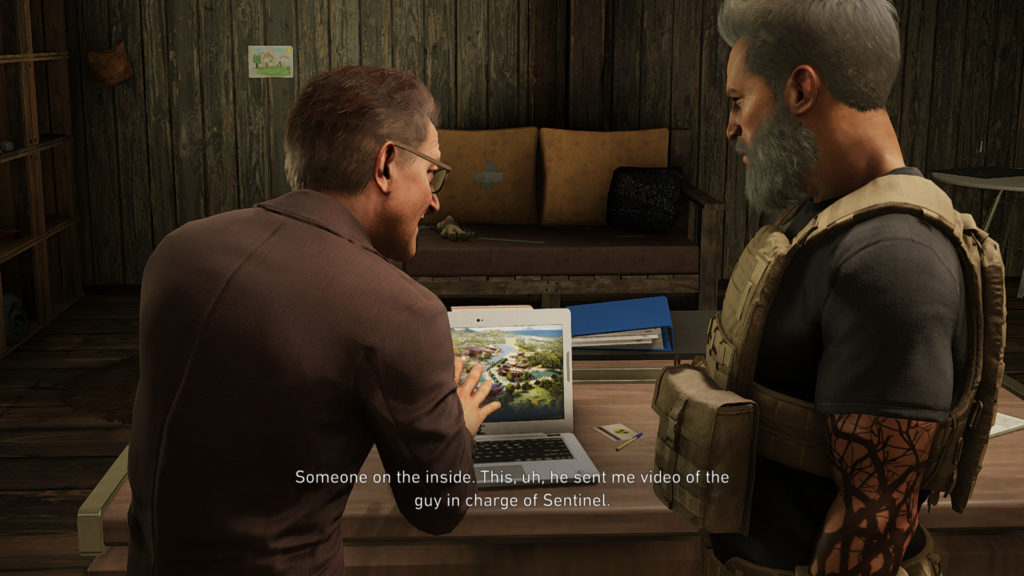
On that note, the game automatically groups players with complementary classes. Hot-joining other groups for difficult missions, for example, will not result in getting stuck with an entire group of demolitions experts or sharpshooters (a common issue with Wildlands). During my time with the campaign, I never felt the need to join up with other players. Naturally, this is because the single-player campaign is meant to be just that – a revenge-filled one-man’s journey to fix what needs fixing.
Perhaps the biggest departure from the previous title is how in single player, Nomad no longer links up with a squad of three other ghosts. You are really on your own in this one, and Ubisoft wants the player to feel and experience that loneliness during the narrative. Players do not need to abide by this change, of course, since Ubisoft lets players link up and play together from the start. However, where co-op and multiplayer were a big part of Wildlands (going so far as to give you three computer-controlled squadmates in single player), it is just a ported feature in Breakpoint, and players do not need to abide to it.
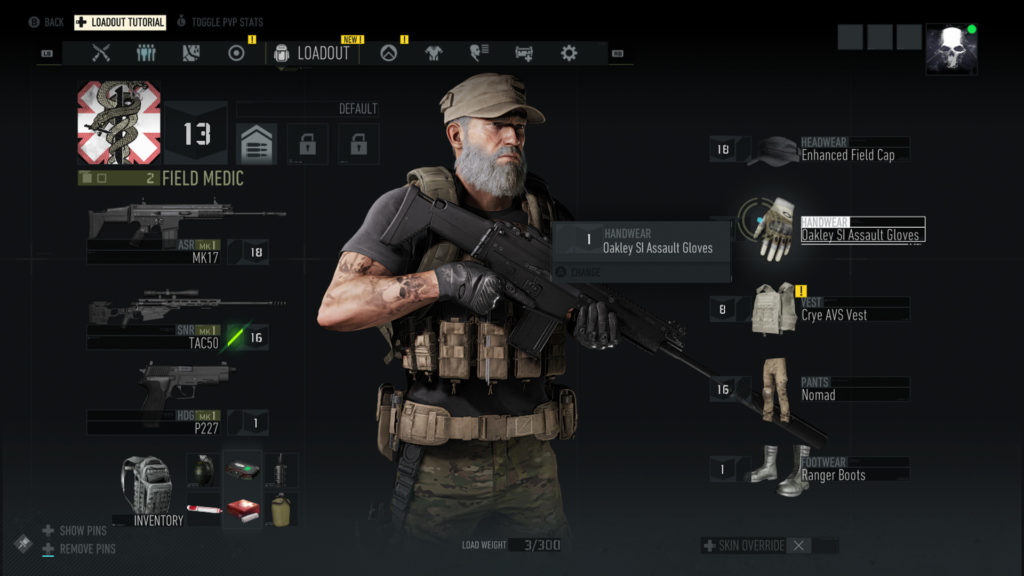
Given Ghost Recon Breakpoint‘s increased sense of vulnerability, Ubisoft have had to make certain changes to the core mechanics of the title. The most prominent of these changes is a new manual healing system. It is similar to Far Cry, with instant, limited-use consumables, or an infinite amount of bandages that Nomad can conjure up from seemingly nowhere. No longer can players simply stand still and heal. This is a great change, and one I always felt Wildlands needed more of. The aspect of proper consequences to actions. In Breakpoint, you can no longer run headfirst into a firefight and expect to survive by simply standing around a corner and healing. Now you must plan your moves more strategically.
Ghost Recon Breakpoint has also adopted several features from the multiplayer looter/shooter, The Division. In a way, Breakpoint is very much also a looter/shooter now. Like The Division, Breakpoint has adopted a similar underlying structure. Enemies have developed bullet-spongy health bars (but only just), and there is a constant supply of enemies, to begin with. Fortunately, unlike The Division, enemies can still be killed by a single high-calibre bullet to the head, and “bosses” are still just as easy to take down as in Wildlands. With that said, the only players who will notice the underlying “RPG” elements and health bar changes will be players who like to pull up with handguns and sub-machine guns.
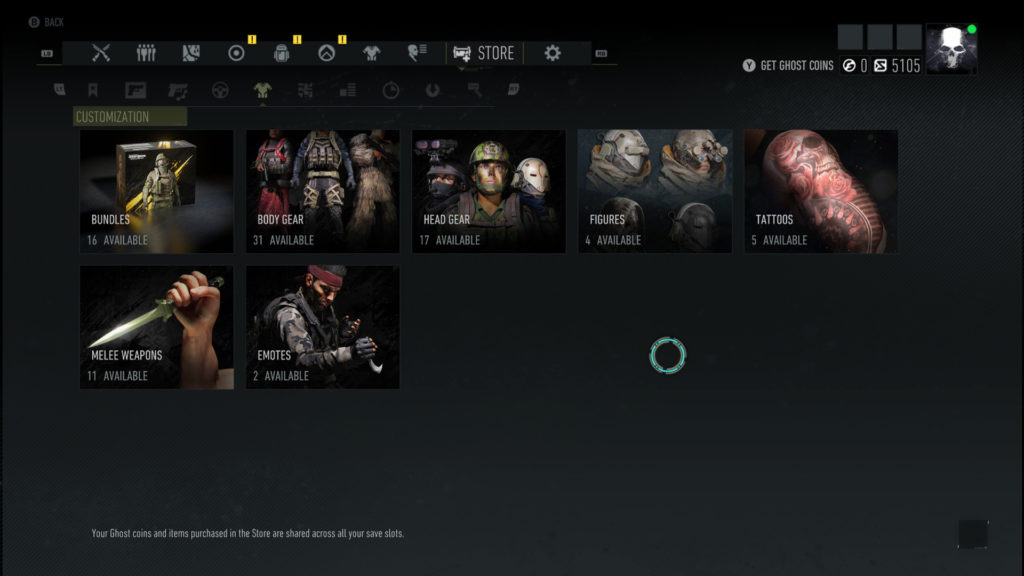
Another interesting key feature is Exploration Mode. Adopted from the Assassin’s Creed franchise, this mode turns off intrusive heads-up display (HUD) elements. It also lets players search for and find objectives on their own, with the use of clues from maps and conversations.
Ghost Recon Breakpoint now features a cool Hub area (such as The Division), where players can shop and chat to the occasional quest-giving non-playable character (NPC). Here players can also meet up with friends and other players to join up for player versus player matches, or general exploration in the open world.
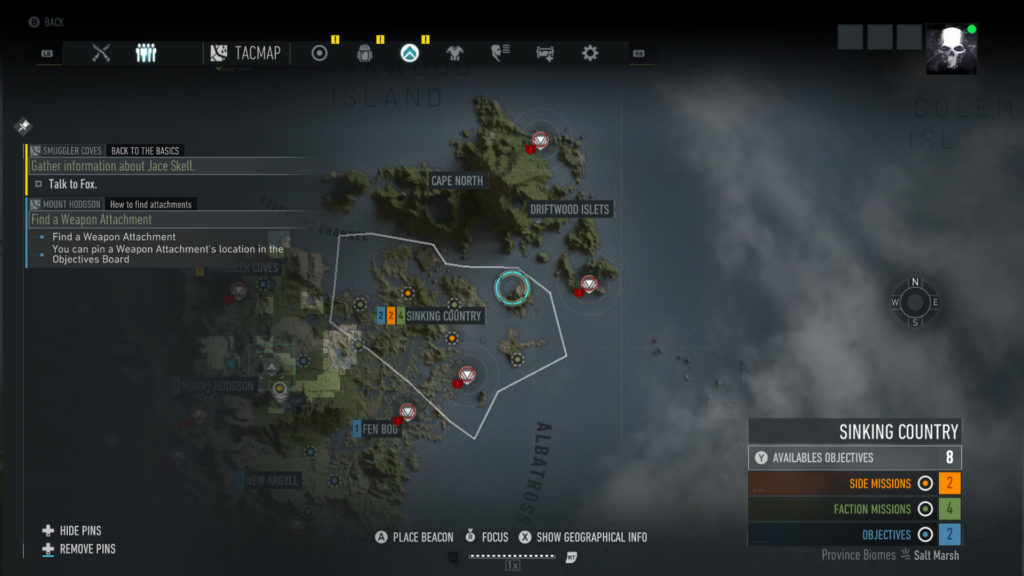
A returning aspect from Wildlands is the huge array of weapons and gear players can equip. Ghost Recon Breakpoint attempts to take this one step further, but ultimately misses the mark. The focus on gear score makes large parts of the game’s interface useless. Especially when you finally figure out how this “clearly better gun or helmet with green arrows that indicate better scores” does not mean anything when enemies can headshot and kill you in two hits (just like you can do to them). Similarly, the game’s new underlying looter/shooter mechanics inertly hand out new gear and loot everywhere you go. Why spend cash to buy and upgrade a weapon, when you will likely get a better one within fifteen minutes? It is all rather trivial, and it does not affect player versus player anyway. The game would have been better if it did not have arbitrary scores at all. My take away from this? Play the game with whatever weapon you prefer.
It is true. Ghost Recon Breakpoint includes a comical amount of microtransactions. When you enter the in-game shop, you are met with countless tabs and pages of items you can buy with real-world currency, or premium currency converted from real-world currency. It gets even worse when you notice how almost every single facet of the game has been monetised! There are “time savers” that net you more money or more experience; while you can also purchase starter packs with whole sets of gear – something that will admittedly make the first hour or two a little easier; booster packs that will net you a whole bunch of crafting supplies, and even entire level skips – you know, for when you need to unlock that level 30 ability in the first five minutes of the game. It is very jarring and quite egregious. Fortunately, I will not go so far as to say that Ubisoft turned the game into an unplayable slog. Ghost Recon Breakpoint‘s single-player experience never feels like a grind, and all weapons, gear, and vehicles are often within a minute’s walk.
Being pretty takes some doing
An aspect of microtransactions seen in pretty much every single game nowadays, are those relating to aesthetics and cosmetics. Within the in-game store, you can purchase items like floral t-shirts, and boldly-coloured caps and sprays for your weapons. My question to you, dear reader, is why would you want to do that anyway? The game looks phenomenal, and I would much rather role-play and immerse myself in the world than run around in a pink tuxedo. The choice is there though, for those who want it.
Ghost Recon Breakpoint is clearly built on the same engine as The Division 2. Long-gone are the photorealistic visuals from Wildlands, and instead we now have this weirdly perfectly real, yet not-exactly-photorealistic, graphic style. Faces are rounder and more forgiving, while the lush jungle is a beautiful environment with bright green colours, mixed with perfectly dark shadows and muddy, earthy colours.
I also love the reworked animations in Breakpoint. Wildlands constantly felt like it just rehashed The Division. Breakpoint, on the other hand, clearly comes into its own with brand-new heavy military-influenced movements. Nomad’s running animation, for instance, makes him look like the big brute that he is. It is very much the same kind of run you would expect from someone who make it through high school on a Rugby scholarship. Think Hulk-like, but not green and smaller.
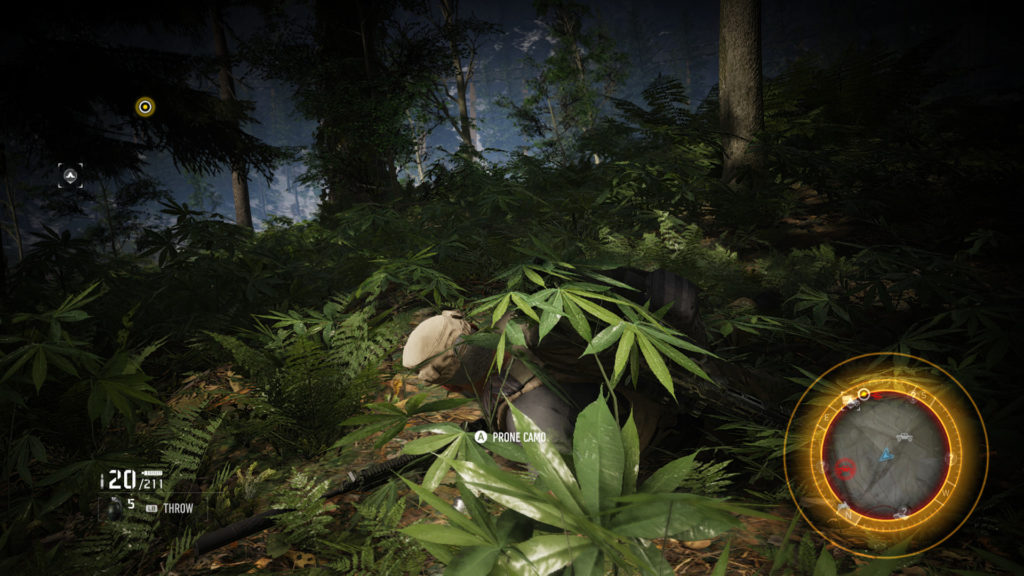
Other animations have been reworked completely as well. Running down a slope will now have Nomad do a weird slide and tumble dance, which decimates all saved stamina. Falling to the ground and doing a wiggle in the muddy grass will prompt the player with a cool new option to camouflage, entering Nomad into a little animation where he smears mud all over himself. This results in enemies having a much harder time spotting you. It also looks great in the process – the Soldier of Fortune kid in me cannot get enough of it.
I am a sucker for gunporn, military tactics, espionage, and pretty much everything else Ghost Recon stands for. However, the brand-new looter/shooter structure in Ghost Recon Breakpoint removes some of the gun and military worship in favour of much more carefree gameplay. It also falls victim to the looter/shooter gear rush, where you never hold onto the same bit of gear for long enough to care for it. It is an aspect Wildlands was well known for. At the end of the day, it is all meant to be easier, simpler, and better looking. All three aims Ubisoft nailed, without fault.
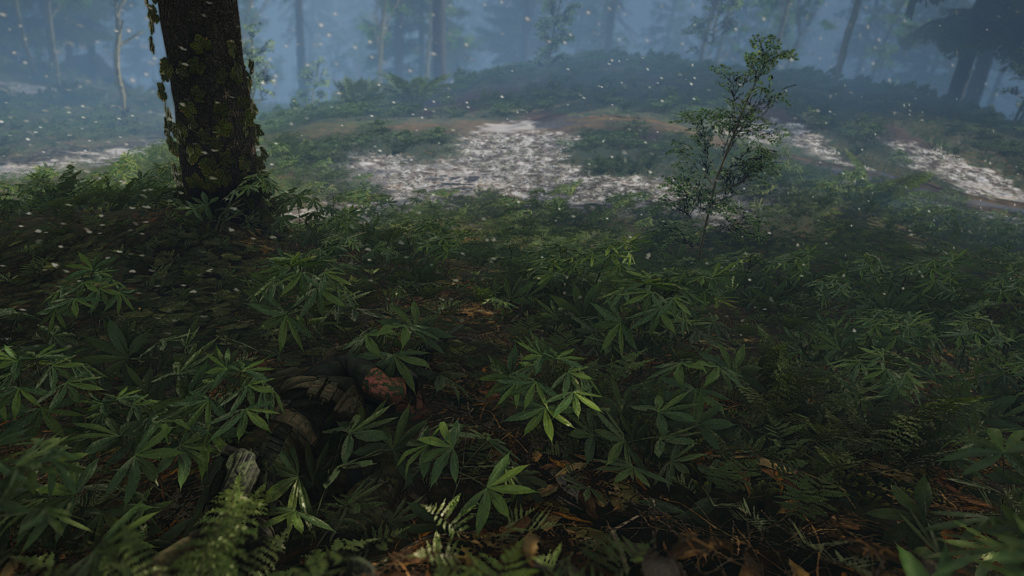
All’s well that ends well
Ghost Recon Breakpoint might be the sequel to Ghost Recon Wildlands, but it feels like a greatest hits of Ubisoft‘s open-world catalogue. It takes cues from Far Cry, Assassin’s Creed, and even its multiplayer sibling, The Division; and it does this all in the name of improvement. A noble goal that has been achieved with aplomb.
Beyond mechanics and its stunning presentation, Ghost Recon Breakpoint has a heck of a lot for players. It features a great and memorable narrative, which one-ups even The Division 2. It allows players to feel truly alone in the world of Auroa, making survival a core element of gameplay. As the map slowly opens up, it reveals the mystery of the island in a wonderful fashion. The cornucopia of game modes, from ways of exploring, to player-versus-player and even stronger, almost Raid-like, missions; it all really proves how Ghost Recon Breakpoint is a wondered evolution of a fantastic franchise.
The game might be overshadowed by its own load of microtransactions, but as comically abundant as they are, I never once felt like I needed to spend money to enjoy it. Call me a Ubisoft shill for thinking this way, but that is the truth of the matter. Ghost Recon Breakpoint is a great game, and I will likely be clocking hundreds of more hours in it than I did with Wildlands.
| Time Played | 20+ Hours |
| Difficulty | N/A. Exploration Mode On. |
| Platform | Xbox One |
| Acquisition | Review code courtesy of Ubisoft |
Junior Editor at Vamers. From Superman to Ironman; Bill Rizer to Sam Fisher and everything in-between, Edward loves it all. He is a Bachelor of Arts student and English Major specialising in Language and Literature. He is an avid writer and casual social networker with a flare for all things tech related.

